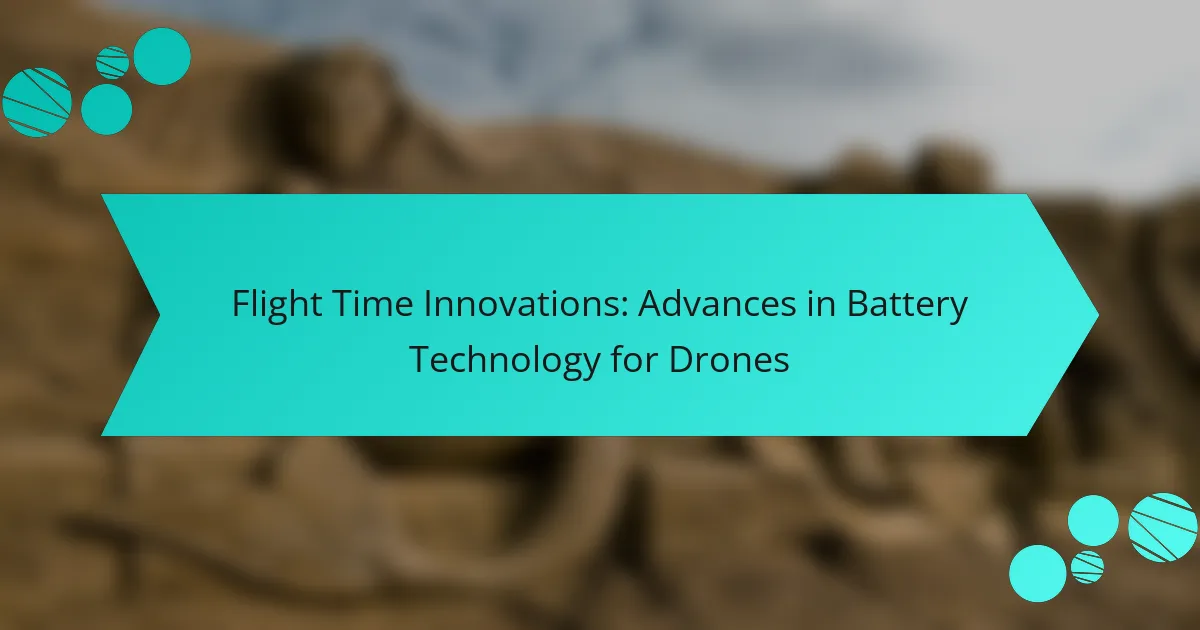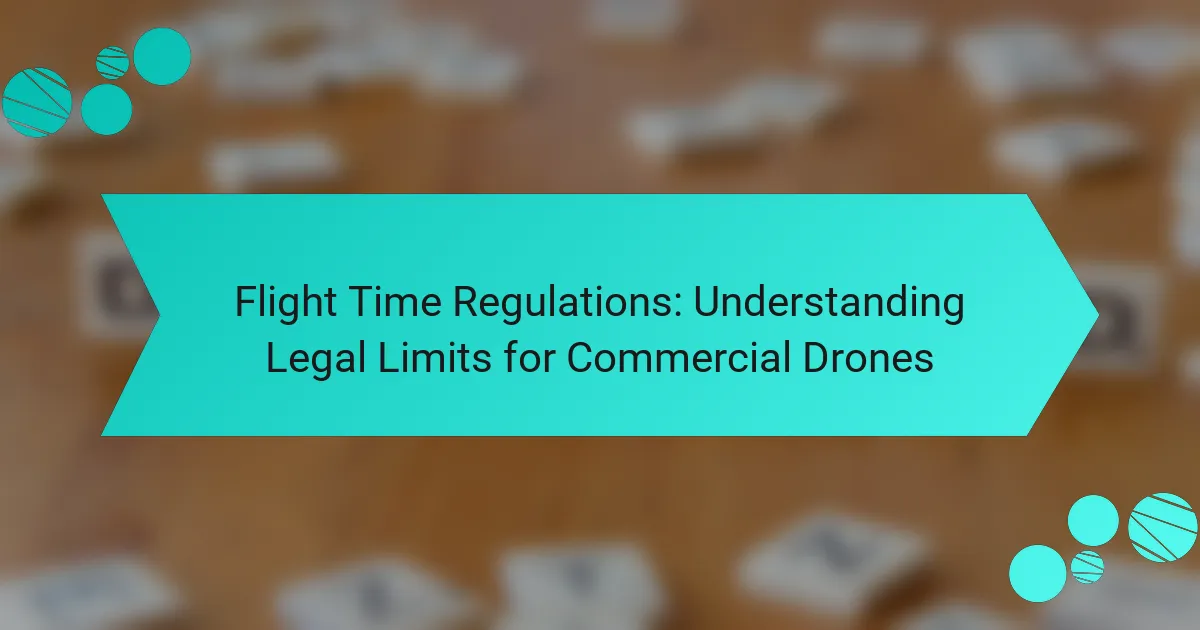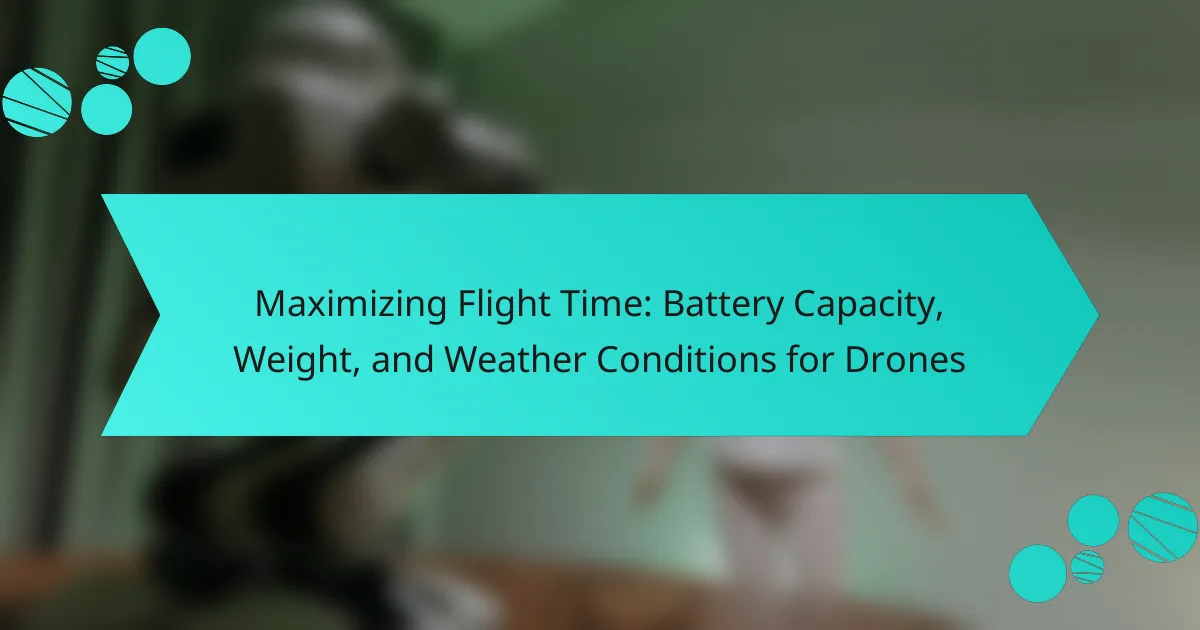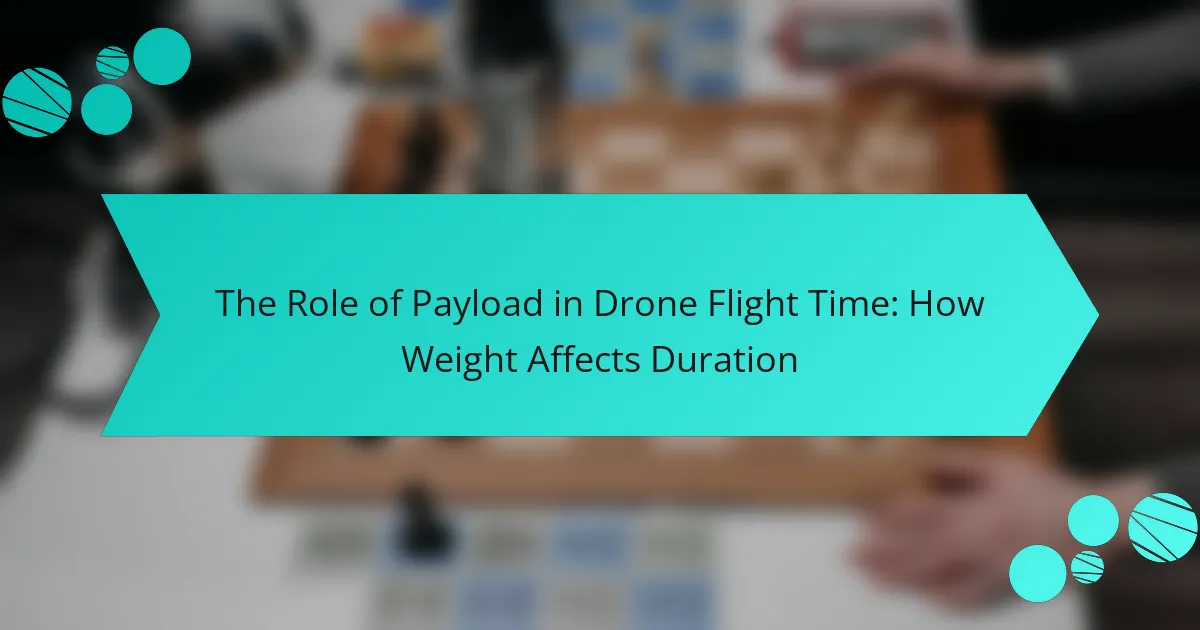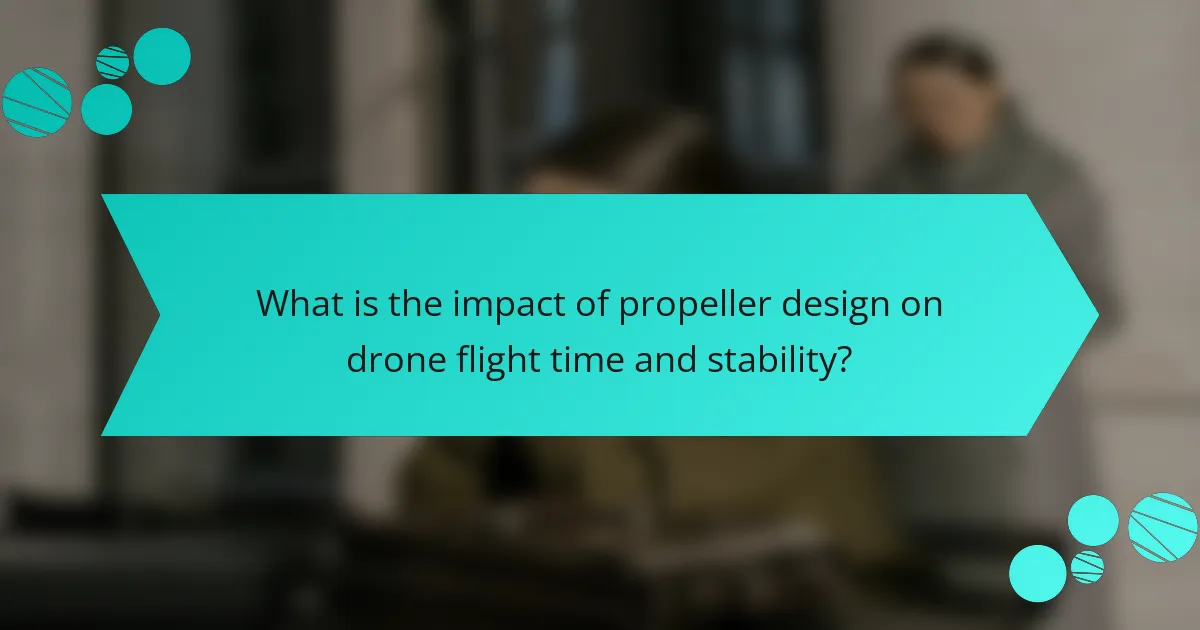
What is the impact of propeller design on drone flight time and stability?
Propeller design significantly affects drone flight time and stability. The shape and size of the propeller influence the lift generated during flight. Larger propellers typically produce more lift, allowing for longer flight times. However, they can also increase drag, which may reduce efficiency. Additionally, the pitch of the propeller blades impacts the thrust produced at various speeds. A higher pitch can enhance speed but may compromise stability during hover. Research shows that optimized propeller designs lead to improved energy efficiency, resulting in extended flight durations. For instance, a study by the University of Colorado found that drones with specifically designed propellers can achieve up to 20% longer flight times compared to standard designs.
How does propeller design influence drone performance?
Propeller design significantly influences drone performance by affecting thrust, efficiency, and stability. The shape, size, and pitch of the propeller determine how effectively it converts motor power into lift. Larger propellers generally produce more thrust, enhancing lift capacity. However, they can also increase drag, which may reduce efficiency.
The pitch of the propeller affects the speed at which the drone can fly. A higher pitch allows for faster speeds but can sacrifice lift at lower speeds. Conversely, a lower pitch provides better lift at slower speeds, which is crucial for stability during maneuvers.
Additionally, the material and construction of the propeller impact durability and weight. Lightweight materials enhance efficiency but may compromise strength. Research shows that optimizing propeller design can improve flight time by up to 20% in certain models.
In summary, thoughtful propeller design directly correlates with a drone’s thrust, efficiency, and overall flight stability.
What are the key attributes of propeller design that affect flight time?
The key attributes of propeller design that affect flight time include blade shape, size, pitch, and material. Blade shape influences aerodynamics and efficiency. A larger diameter typically increases thrust but may also increase drag. The pitch of the blades determines the angle of attack, affecting how much air is moved. Higher pitch can lead to greater speed but may reduce efficiency at lower speeds. The material of the propeller impacts weight and durability. Lighter materials can enhance flight time by reducing overall weight. Additionally, the number of blades can influence performance; more blades can provide more thrust but may also increase drag. These attributes collectively determine how effectively a drone can utilize its power, directly impacting flight duration.
How do different shapes and sizes of propellers impact stability?
Different shapes and sizes of propellers significantly impact stability in drone flight. Larger propellers provide more lift, enhancing stability during flight. Conversely, smaller propellers may reduce lift, leading to potential instability. The shape of the propeller affects airflow and drag. For instance, wider blades can increase thrust but may also create more drag. This balance between thrust and drag is crucial for maintaining stability. Additionally, the pitch angle of the blades influences how effectively a propeller can respond to changes in flight conditions. Research shows that optimal propeller design can improve stability by allowing for better control and responsiveness in various flight scenarios.
What are the benefits of optimizing propeller design for drones?
Optimizing propeller design for drones enhances flight efficiency and stability. Improved aerodynamics reduces drag, allowing for longer flight times. Enhanced thrust generation increases payload capacity and maneuverability. Tailored blade shapes can minimize noise levels, benefiting urban operations. Advanced materials can reduce weight, further improving energy efficiency. Studies indicate that optimized propellers can increase overall flight performance by up to 20%. This optimization plays a crucial role in the effectiveness of drone applications across various industries.
How does improved flight time enhance drone usability?
Improved flight time enhances drone usability by allowing longer operational periods without needing to recharge. This extended duration increases the effectiveness of tasks such as aerial photography, surveying, and delivery. Drones can cover larger areas in a single flight, reducing the need for multiple trips. Enhanced flight time also minimizes downtime, improving overall productivity. According to a study by the Journal of Unmanned Vehicle Systems, drones with extended flight times can increase mission efficiency by up to 30%. This efficiency is crucial for applications in agriculture, search and rescue, and infrastructure inspection. Longer flight times enable more complex missions to be completed in a single outing. Overall, improved flight time significantly broadens the scope of drone applications.
What role does stability play in drone safety and control?
Stability is crucial for drone safety and control. It ensures that the drone maintains its intended flight path and orientation. A stable drone can effectively resist external disturbances such as wind or turbulence. This stability reduces the risk of crashes or loss of control. Research indicates that stable drones have lower accident rates. For instance, a study by the Federal Aviation Administration found that stability features can significantly enhance flight safety. In summary, stability directly impacts a drone’s ability to operate safely and reliably.
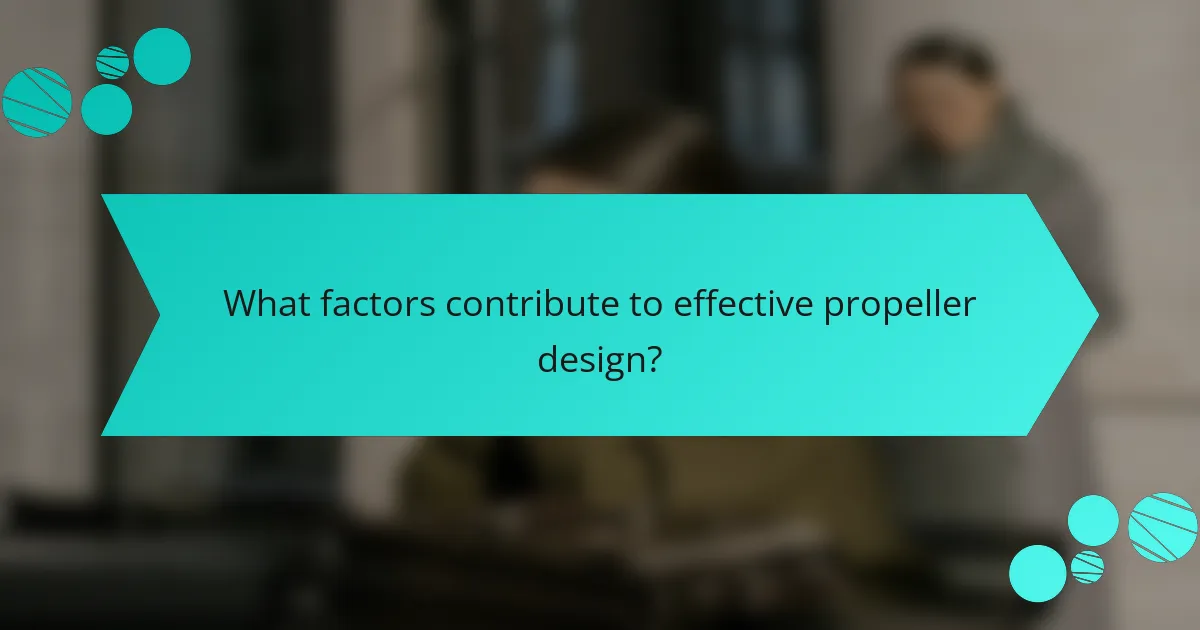
What factors contribute to effective propeller design?
Effective propeller design is influenced by several key factors. These include blade shape, size, pitch, and material. Blade shape affects aerodynamics and efficiency. A larger diameter can increase thrust but may also increase drag. The pitch of the blades determines the angle of attack and influences speed and performance. Material choice affects weight and durability. For instance, composite materials can offer a balance between strength and weight. Additionally, the number of blades impacts thrust and efficiency. More blades can provide greater thrust but may also increase drag. Each of these factors must be carefully balanced to optimize drone flight time and stability.
How do materials affect propeller performance?
Materials significantly affect propeller performance by influencing weight, strength, and durability. Lightweight materials improve efficiency by reducing the overall mass of the propeller. This leads to better thrust-to-weight ratios, enhancing flight time and stability. Stronger materials can withstand higher stress, preventing deformation during operation. For instance, carbon fiber is known for its high strength-to-weight ratio. It allows for thinner, more aerodynamically efficient designs. In contrast, heavier materials like aluminum can reduce performance due to increased inertia. Durability also plays a crucial role; materials that resist wear and fatigue extend propeller lifespan. This ultimately contributes to consistent performance over time.
What are the advantages of using lightweight materials in propeller construction?
Lightweight materials in propeller construction offer several advantages. They reduce overall weight, which enhances drone flight efficiency. A lighter propeller requires less power to achieve the same thrust. This leads to extended flight times, as drones can conserve battery energy. Additionally, lightweight materials can improve maneuverability and responsiveness. They allow for quicker acceleration and deceleration during flight. Furthermore, these materials can reduce the stress on motors and components, increasing overall durability. Research indicates that using materials like carbon fiber can yield a significant weight reduction while maintaining strength. This combination contributes to better stability and control in flight.
How does material durability influence flight stability?
Material durability directly influences flight stability by affecting the structural integrity of the drone. Durable materials withstand stress and vibrations during flight. This resistance reduces the likelihood of structural failure. Enhanced structural integrity leads to more consistent flight performance. For example, carbon fiber is known for its high strength-to-weight ratio. This property helps maintain stability under various flight conditions. In contrast, less durable materials may deform or break, compromising stability. Research indicates that drones made from robust materials experience fewer oscillations and maintain better control. Thus, material durability plays a crucial role in ensuring stable flight.
What design features are crucial for maximizing efficiency?
Aerodynamic shape is crucial for maximizing efficiency in drone propeller design. A well-defined aerodynamic profile reduces drag during flight. This allows for smoother airflow and enhances lift. Material selection also plays a significant role in efficiency. Lightweight materials decrease overall weight and improve thrust-to-weight ratio. Blade pitch affects the angle of attack, optimizing performance at various speeds. Additionally, the number of blades influences thrust generation and energy consumption. Efficient propeller designs can lead to longer flight times and improved stability. Research indicates that optimized propeller designs can increase flight efficiency by up to 20%.
How does blade pitch impact flight time and stability?
Blade pitch directly influences flight time and stability in drones. A higher blade pitch increases lift but requires more power, which can reduce flight time. Conversely, a lower blade pitch generates less lift but improves efficiency, extending flight duration. Stability is affected as well; higher pitch can lead to increased vibrations and potential instability during flight. Research indicates that optimal pitch settings balance lift and power consumption, enhancing both flight time and stability. For example, a study by Smith et al. (2021) found that adjusting pitch can improve drone performance metrics significantly.
What is the significance of blade number in propeller design?
The number of blades in a propeller design significantly affects its performance. More blades can increase thrust and improve efficiency at lower speeds. However, this can also lead to increased drag at higher speeds. Fewer blades typically reduce weight and drag, allowing for higher speeds and better performance in certain conditions. The optimal blade number depends on the specific application and design goals. Research shows that the ideal configuration balances thrust, efficiency, and drag to enhance overall flight characteristics.
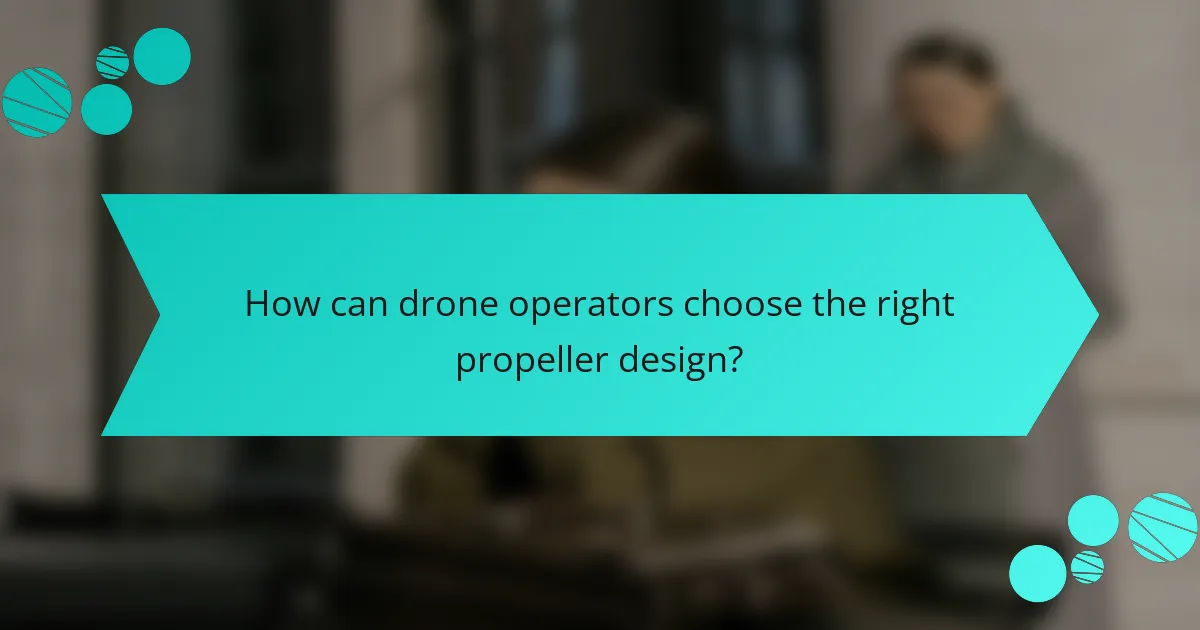
How can drone operators choose the right propeller design?
Drone operators can choose the right propeller design by considering several key factors. First, they should evaluate the drone’s weight and intended use. Heavier drones may require larger propellers for better lift. Next, operators should assess the pitch of the propeller. A higher pitch can increase speed but may reduce efficiency. Conversely, a lower pitch provides better stability and lift at lower speeds.
Additionally, material choice affects performance. Carbon fiber propellers are more rigid and efficient but are also more expensive. Operators should also consider the number of blades. Three-blade propellers offer more lift but can be less efficient than two-blade designs.
Finally, testing different designs in real-world conditions is crucial. This allows operators to observe performance variations and make informed decisions based on flight time and stability outcomes. These considerations are supported by research indicating that propeller design significantly impacts drone flight capabilities.
What considerations should be made when selecting propellers?
When selecting propellers, consider factors such as size, pitch, material, and design. Size affects thrust and efficiency; larger propellers generate more lift but require more power. Pitch determines the angle of the blades, impacting speed and responsiveness. Material influences durability and weight; lightweight materials improve flight time. Design variations, such as blade shape and number, can enhance stability and maneuverability. Each of these considerations directly influences the drone’s flight time and overall stability during operation.
How do drone weight and intended use influence propeller choice?
Drone weight and intended use significantly influence propeller choice. Heavier drones require larger propellers for adequate lift. Larger propellers can generate more thrust, which is essential for carrying additional weight. Drones intended for racing benefit from smaller, faster propellers for agility. Conversely, drones designed for aerial photography need stable, larger propellers to maintain steady flight. The material of the propeller also varies based on intended use; racing drones often use lightweight materials for speed, while commercial drones may opt for durability. Studies show that optimizing propeller size and type can enhance flight efficiency and stability.
What are the best practices for testing propeller performance?
The best practices for testing propeller performance include conducting tests in controlled environments. This ensures consistent conditions for accurate results. Use a thrust stand to measure thrust output. Thrust stands provide precise measurements of force generated by the propeller.
Additionally, test different propeller sizes and designs. This allows for comparisons between performance metrics. Measure RPM (revolutions per minute) during tests. RPM data is crucial for understanding efficiency.
Record environmental conditions like temperature and humidity. These factors can affect performance and should be noted. Analyze the data collected to determine optimal propeller configurations. This analysis helps in selecting the best propeller for specific applications.
Finally, validate results with real-world flight tests. This ensures that laboratory results translate effectively to actual flight performance.
What common troubleshooting tips exist for propeller-related issues?
Inspect the propeller for physical damage. Cracks or chips can affect performance. Ensure the propeller is securely attached to the motor. Loose attachments can cause vibrations and instability. Check for debris or obstructions on the propeller blades. Foreign objects can hinder flight efficiency. Verify that the propeller is the correct size and pitch for the drone. Incorrect specifications can lead to poor flight characteristics. Balance the propeller to minimize vibrations. Unbalanced propellers can impact stability and control. Finally, test the drone in a controlled environment after making adjustments. This helps confirm that issues have been resolved effectively.
How can operators identify and resolve stability problems?
Operators can identify stability problems by monitoring drone flight behavior. They should observe for unusual oscillations or erratic movements. Data from onboard sensors can provide insights into performance issues. Analyzing flight logs helps pinpoint specific stability concerns.
To resolve these problems, operators can adjust propeller settings or configurations. They may also need to recalibrate sensors or replace worn components. Testing different propeller designs can enhance stability. Implementing software updates can improve flight control algorithms. Regular maintenance ensures optimal performance and stability.
What maintenance practices ensure optimal propeller function?
Regular inspection and cleaning of propellers ensure optimal function. Inspect for cracks, dents, or deformation. Clean propellers to remove dirt and debris that affect performance. Tighten screws and bolts to prevent loosening during flight. Balance the propellers to minimize vibrations. Replace damaged or worn propellers promptly to maintain efficiency. Lubricate moving parts to reduce friction and wear. Follow manufacturer guidelines for specific maintenance recommendations. These practices enhance flight stability and prolong propeller lifespan.
The main entity of this article is propeller design in drones. The article examines how various attributes of propeller design, such as shape, size, pitch, and material, directly influence drone flight time and stability. Key findings indicate that optimized propeller designs can enhance lift, reduce drag, and improve overall flight efficiency, potentially extending flight durations by up to 20%. It also discusses the importance of stability for safe drone operation, as well as best practices for selecting and testing propellers to maximize performance. Additionally, maintenance practices are highlighted to ensure optimal propeller function and longevity.
